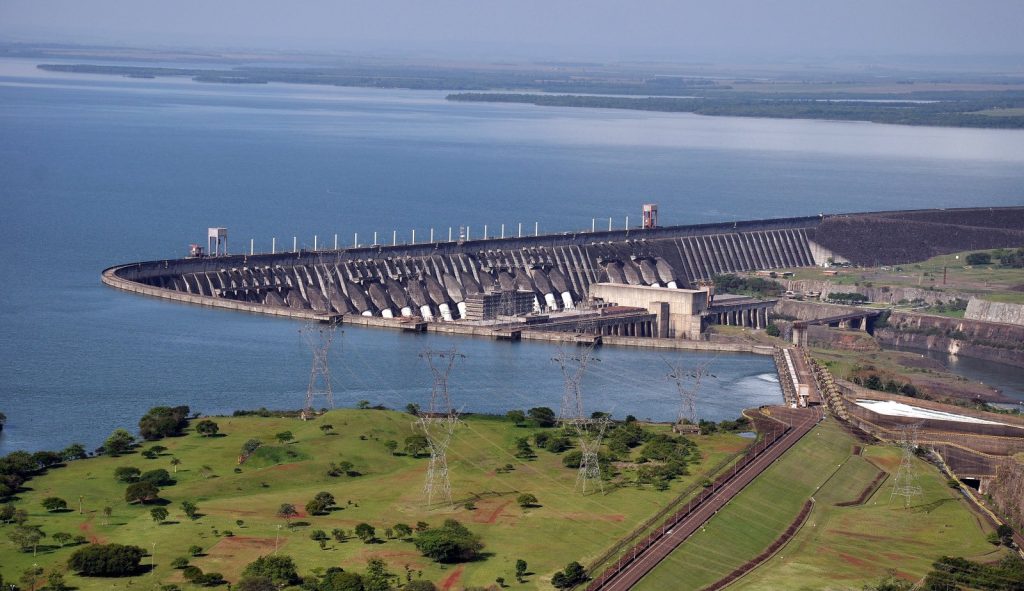Itaipu Binacional has started the installation of its first floating solar plant on the Paraguayan side of the reservoir. The 1-megawatt pilot project represents an US$800,000 investment designed to evaluate floating solar technology compatibility with existing hydroelectric operations.
The facility will mark Paraguay’s largest floating solar installation, serving experimental purposes to measure performance and technical viability. Director Justo Zacarías confirmed energy generation will begin in September.
Advanced flotation technology arrives
Construction teams have positioned 2,435 flotation devices at the dam’s right bank, comprising 30 percent of total project requirements. The installation utilises high-density polyethylene technology designed by French company Ciel et Terre and manufactured in Brazil.
Dr. Pedro Gardel from Itaipu’s Renewable Energy Advisory detailed the sophisticated flotation system. The design incorporates five distinct device types: large units for pedestrian access and maintenance, lighter variants for north-facing panel orientation, and three smaller connector types for structural integrity and perimeter establishment.
Site preparation has progressed with completed topographical surveys, and security installations. The control and monitoring facility will be positioned 50 metres from the reservoir, connected to the solar plant via a purpose-built flotation walkway for safe personnel access.
Strong regional interest emerges

Engineer Pedro Domaniczky presented the project’s potential at the XX Ibero-American Regional Meeting of CIGRE in May. The presentation generated significant interest from regional representatives, with delegates from Colombia, Guatemala and Peru expressing intentions to explore similar initiatives.
The project’s scope demonstrates considerable potential for expansion. According to Domaniczky, utilising just 10 percent of Itaipu’s reservoir surface could generate up to 15,000 megawatt of solar capacity, surpassing the facility’s current 14,000 megawatt hydroelectric output from twenty generating units.
The floating design offers operational advantages beyond standard solar installations. Water cooling enhances panel efficiency by 10 to 20 percent compared to terrestrial systems, whilst reduced evaporation increases overall hydroelectric generation capacity.
Strategic energy diversification
The solar plant will provide crucial support during peak demand periods, particularly afternoon hours when electricity consumption reaches maximum levels. This complementary generation approach addresses potential supply challenges whilst diversifying Paraguay’s energy portfolio.
ANDE President Félix Sosa highlighted the reservoir’s unique potential for renewable energy development. The initiative forms part of comprehensive strategies to ensure reliable electricity supply for Paraguay’s growing energy needs.
Preparation for the project included technical exchanges with Brazilian counterparts, including visits to a 5-megawatt floating solar facility in São Paulo. Both Paraguayan and Brazilian leadership support project advancement pending completion of ongoing studies.
The solar energy industry is growing rapidly in Paraguay as well as the whole green energy sector. A couple of days ago, India and Paraguay secured US$150 Million in a green energy deal.


